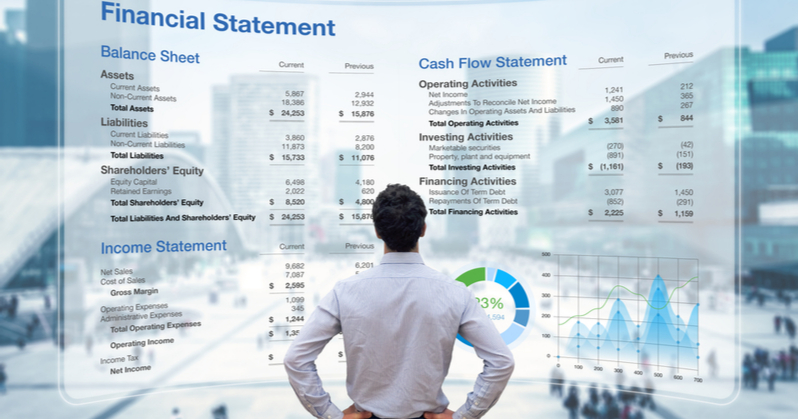As an accounting professional, you know the importance of reports. After all, financial reports give you the necessary information to accurately show your clients’ businesses’ financial health and well-being. And if you’re using cloud accounting software, you want to be able to pull reports with ease. But, what reports should be in your cloud accounting software?
What reports should your cloud accounting software include?
There are eight reports you should want to see in your cloud accounting software. Take a look at the necessary reports.
1. General ledger
The general ledger is the foundation for each client’s books. If your accounting software does not have a general ledger, you must manually create it so you can help your clients with:
- Organizing business transactions
- Reporting real financial data
- Balancing their books
- Preparing for audits
- Applying for business loans
Cloud accounting software should include the general ledger because it is one of the three main accounting reports. So, steer clear of any options that do not list it on their reports. Otherwise, you will be stuck manually creating the report for each client.
2. Balance sheet
As the first of the three main financial reports, the balance sheet is a must-have report. It shows your clients the stability of their finances. For example, if a client asks you if they’re under- or over-spending, you want to be able to access the information on the balance sheet quickly.
And if a client wants your help to redetermine their pricing or marketing strategy, this is the report to create. Like the general ledger, your software should include this report.
3. Profit and loss statement
The second main financial report is the profit and loss statement (P&L), or the income statement. As you track financial information for your clients, this report helps you see if clients are turning a profit or losing money.
Do you help your clients plan out their budgets? What about helping them determine the success or failure of their budgets? If so, you want to be able to generate the P&L statement with ease.
You also should keep an eye on this report for your clients throughout the year. Why? If your clients run into any financial problems, you can use the profit and loss statement to identify and help them address the issue before it snowballs.
4. Cash flow statement
Use the third main accounting report, the cash flow statement (aka statement of cash flows), to inform your clients about how much money is coming in and leaving their business. Your cloud accounting software should include this report so you can easily access and track the flow of income and expenses for your clients.
Choose an accounting software program that lets you easily see if your client has positive or negative cash flow. If you see negative cash flow, check to see if there are any unpaid invoices and inform your clients of any issues.
5. Accounts receivable aging
The accounts receivable (AR) aging report helps you track outstanding balances. This report is two-fold for your firm. First, you can track which clients have customers that owe them money that impacts their cash flow statement. And, you want to use accounting software that allows you to track which clients owe you money for your services.
The AR aging report lets you see the:
- Customer or client name
- Total balance for each customer or client
- Current amount due
- Days past due (e.g., 61-90 days)
- Totals for each column
Use the report to forecast cash flow for you and your clients, estimate bad debt, and stay on top of collections,
6. Accounts payable aging
Contrasting the AR aging report is the accounts payable (AP) aging report. So, why do you need this report in your accounting software? Because it helps you identify why a client has positive cash flow that may be too high. And, you can use it to see how much clients owe to their vendors.
Tracking how much money your clients owe lets you help your clients:
- Plan future expenses
- Build a budget
- Manage cash flow
- Decide which debt(s) to pay first
- Stay on top of payments
Use the AP aging report to set up reminders for your clients to process payments to their vendors (including you!).
7. Check register
As an accounting professional, you need to know all of the financial details your clients have. A check register report records the check and cash transactions your clients have during the accounting period. Use the report to view and calculate the running balance of your clients’ checking accounts to better understand their financial situation.
With the check register report, you can readily access up-to-date information to help guide your clients through financial decisions. And, other benefits of the check register include helping clients:
- Stay organized financially
- Improve budgeting
- Avoid overspending
- See accurate balances
- Track spending
- Locate and resolve mistakes
- Reconcile bank statements
Look for an accounting software program that allows you to easily and securely connect your clients’ banking information and generate the report.
8. Invoicing reports
Most accounting software should include invoicing reports. But, double-check to see if your software can create reports like:
- Estimate details
- Invoice details
- Unpaid invoices
- Customer payment history
Choose software that lets you see a quick snapshot of all invoicing information per client and allows you to see your own invoicing information. For example, use invoice reports to see when clients last paid you, how much, and if their account is current.
.png?width=150&height=63&name=TWRlogo-regmark_blueblack%20(1).png)
.png)










Do you have questions about this article? Email us and let us know > info@woodard.com
Comments: